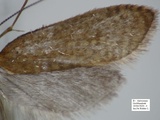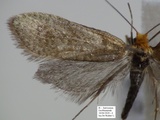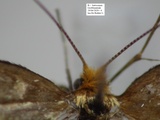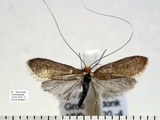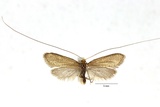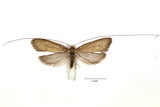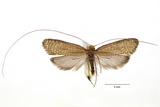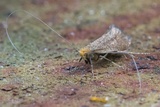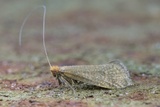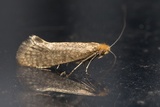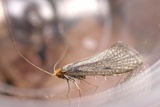Nematopogon adansoniella (De Villers, 1789) Species
Last modified: Dec. 16, 2025, 5:48 p.m.
A fairly common species in Belgium.
Details
- Classification
- Family: Adelidae > Subfamily: Nematopogoninae > Genus: Nematopogon > Species: Nematopogon adansoniella
- Vernacular names
- Gevlekte langsprietmot (NL), Laubholz-Langhornmotte (DE)
- Synonyms
- Nematopogon panzerella (Fabricius, 1794)
- First mention in Belgium
- De Fré Ch. 1858. Catalogue des Microlépidoptères de la Belgique. — Annales de la Société entomologique belge 2: 45–162. On page 116 (as N.[ematopogon] Panzerella. H.). view page
- Status
-
Native
Distribution
Caterpillar
Whitish, semi-transparent skin; head brown; thoracic plates lighter brown.
Case
10–12 mm, constructed from 4 to 5 crescent-like dry leaf parts, gradually in larger format.
Bionomics
The eggs are deposited in the stems of lower plants like Glechoma hederacea or Lamium galeobdolon, though these plants do not serve as a larval food plant. After hatching, the small caterpillars drop to the soil where they make their first case.
The adult moths are active in the early morning, the afternoon and at dusk. The males can be observed swarming from an hour before sunrise until just after the sun appears. They come occasionally to light.
Flight periods
The adults fly in one generation a year from early April till early June.
Habitat
Bright deciduous forests, with a preference for mixed forests with Quercus and Fagus in xerothermic habitats.
